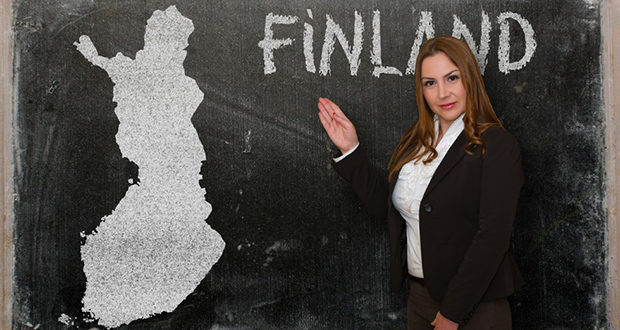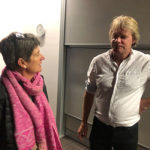While many Australian schools have spent the last few decades admiring the old school tie, tightening standardisation and rubrics while chasing NAPLAN and ATAR scores, Finnish educators have been told to study best practices, and then try and improve on these.
When the GFC occurred in the '90s, Finnish government cuts in the education budget were applied at the top, rather than in schools and curriculum inspection, and development was handed to teachers. The national school inspectorate was abolished and all assessment of students was left to teachers.
This trust in teachers continued to grow, particularly as the priority given to equity in education raised the level of public trust. The system transitioned from a bureaucratic era of micromanagement and control to a new culture of professionalism where schools and teachers would have the expertise to say how they should achieve the best possible outcomes. (Sahlberg & Walker 2021)
In Australia, we were moving in the opposite direction. While we thought we were making improvements by teaching in a way that was aligned to standardised tests and mandated, grade-level content, we were in fact moving away from allowing students and teachers to have any say in the content and its delivery.
Students have started to sense that they are ‘receiving’ an education and teachers that they are delivering it. Neuroscience tells us that when choice and freedom is removed, the same happens with interest and ownership; they are also removed. If there is only one brand to buy, there is no interest in researching the pros and cons of the product.
Students therefore ‘receive’ the content, and do the required ‘work’ to get it out of the way. Some may decide that school is not a place where they feel comfortable and play the game of doing the bare minimum until they can put school behind them permanently. Some will leave education prematurely and never return.
It's no surprise that Finnish schools are two years ahead of ours by Year 10 (as PISA testing tells us), despite starting two years later. That's a 30 to 40 per cent improvement in effectiveness. Three decades of developing and improving best practice has delivered a bounty of methods and techniques, and Finnish students and teachers are thriving.
At the moment there is a lot of talk in education circles about the need to innovate. That's what Finnish educators have been practising. How can anything possibly improve if you don't innovate?
The Finnish education system creates independent, passionate learners who are not there because they want grades. They are autonomous learners who become lifelong learners and successful, responsible citizens. When I recently asked a Finnish educator how they had coped with remote learning, the response was, “Students have made sure that it doesn’t affect their education.” This was in stark contrast to my observations in Australia, where many students had seen remote learning as an opportunity to distance themselves (even further) from their education.
Whilst researching my book Testing 1, 2, 3: What Australian Education Can Learn from Finland, I read about a 16-year-old American who had gone to Finland as an exchange student. “Finnish teenagers can be rebellious,” she said, “but, unlike in America, school is not one of the things they rebel against.” (Ripley, 2013)
I witnessed this in a number of Finnish schools. By making education a partnership between the teacher and the student, many of the things students see as needless constraints and compliance are removed and students and teachers are working together.
Problems with teacher retention are unknown in Finland. In 2012 Pasi Sahlberg surveyed teachers there, asking what it would take to make them leave the profession. The most common response was the loss of their professional autonomy. Finnish teachers develop the curriculum as they see fit; same for assessment. There is no evaluation of teachers; they are asked how they can be supported. They are trusted professionals.
When told about our NAPLAN, they ask why Australian teachers are not trusted. When asked about our standardised curriculum, they ask if our students are all the same and why don’t we trust teachers to develop a curriculum suitable for the students?
According to Stapleton (2019), over half of Australian teachers suffer from anxiety and nearly one fifth are depressed – and around 18 per cent have had symptoms that meet the criteria for moderate to severe depression. Nearly 62 per cent have met criteria for moderate to severe anxiety, while just under 20 per cent experience severe anxiety. And more than half – 56 per cent – met the criteria for moderately to extremely severe somatic symptoms.
As Couros (2015) observed:
“Many teachers are bored with the profession because they know there is a lot more to learning than schools have to offer today. Those teachers want to be innovative, but, instead of connecting and learning from others around the world, let alone with colleagues in their own schools, they spend their time in staff meetings that often seem irrelevant to the heart of teaching.”
I was recently asked by an international education company if I thought Australian teachers were of a world-class standard. My response – and I have been to dozens of schools this year – was that they are definitely so, however, like many Australian students, they often feel like they are delivering a prefabricated, standardised product and assessments. Their judgements and skills are not trusted and they will adjust their teaching accordingly.
Curious Finnish educators – these were lecturers from teacher education – asked me if these methods worked in Australia. I could not answer in the affirmative, and I was embarrassed that I could not explain why we continued with these practices. The only answer I could give was that thousands of teachers (and sadly students) had walked away from Australian schools. They were not putting up with it.
From my perspective, I soon realised that writing a book (What Australian Education Can Learn From Finland) and drawing attention to the problems in the media was not enough.
This is where the collaboration with Finland’s Tampere University of Applied Sciences Educational Sciences Faculty came from. Rather than simply pointing out the problem (NAPLAN does that!), I was able to provide an avenue for schools to access one of the best teacher education universities in the world. Schools can now hear directly from Finnish educators, and interact with them in real time in an ongoing manner, cherry-picking from the decades of innovation the Finnish have done and making immediate changes which don’t require major changes to Australia’s systems.
References
Sahlberg and Walker, (2021). In Teachers We Trust. New York: W.W. Norton & Company Inc.
Michael Lawrence is an experienced educator and the author of Testing 1, 2, 3: What Australian Education Can Learn from Finland . For more information on Finnish perspectives and approaches and how they can be applied, click here.
Do you have an idea for a story?Email [email protected]
 Education Review The latest in education news
Education Review The latest in education news


ooray
As a senior educator, it is exciting to learn about the Finnish education system as I have watched a deterioration of self motivated students, of many disengaged students and students leaving school prematurely because of our system.
“The teacher will appear when the student is ready.”
It is time to teach the child, not the curriculum!
I agree 100%